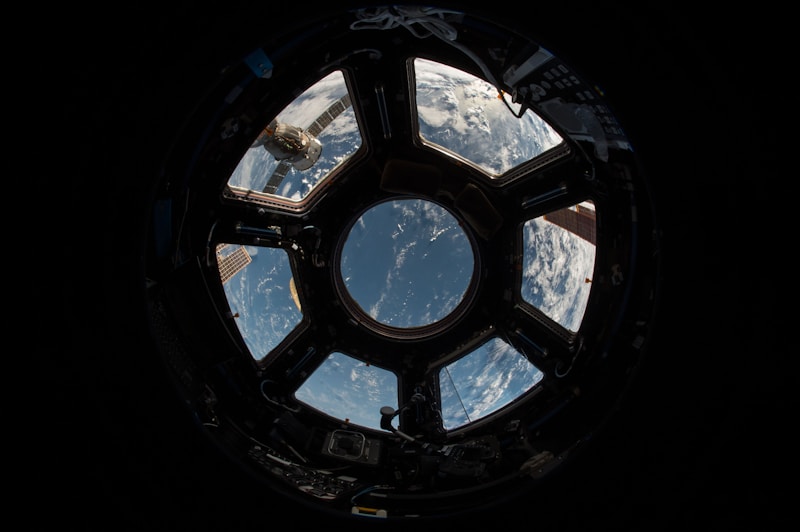Questions and Answers
What is the continuous movement of water on, above, and below the surface of the Earth known as?
Water cycle
What are the building blocks of all matter, including Earth's materials?
Atoms
What determines an atom's element and isotopic properties?
Neutrons and protons
Which component of an atom is arranged in different energy levels or shells?
Signup and view all the answers
What is the process through which water evaporates from the Earth's surface, rises as vapor, condenses into clouds, and falls as precipitation known as?
Signup and view all the answers
How do materials and cycles constantly shape our environment on Earth?
Signup and view all the answers
What does purity in the context of Earth materials refer to?
Signup and view all the answers
How do pure substances differ from impure substances?
Signup and view all the answers
Which term refers to short-term atmospheric conditions like temperature and wind?
Signup and view all the answers
What characterizes an ice age?
Signup and view all the answers
What is the main role of the Earth's atmosphere?
Signup and view all the answers
How does the climate differ from weather?
Signup and view all the answers
Study Notes
Earth Materials and Cycles
Our planet is a dynamic and interconnected system, where materials and cycles constantly shape our environment. In this exploration, we'll traverse through several intriguing facets of Earth's materials and cycles, focusing on the water cycle, the structure of the atom, purity, weather and climate, climate and ice ages, and the atmosphere and climate.
The Water Cycle
The water cycle, also known as the hydrologic cycle, is the continuous movement of water on, above, and below the surface of our planet. It's a closed system where water evaporates from the earth's surface, rises as vapor, condenses into clouds, and falls as precipitation, returning to the soil, lakes, rivers, and oceans through infiltration, runoff, and evaporation. This flow of water is a vital component of the global ecosystem and affects weather patterns and climate.
The Structure of the Atom
The building blocks of all matter, including Earth's materials, are atoms. A typical atom consists of a positively charged nucleus composed of protons and neutrons, surrounded by negatively charged electrons. The nucleus is composed of protons and neutrons, which determine the atom's element and isotopic properties. The electrons are arranged in energy levels, such as the first shell, second shell, and so on, and their arrangement determines the atom's chemical properties.
Purity
Purity, in the context of Earth materials, refers to the degree to which a substance is free from impurities or contaminants. Pure substances have a single chemical composition, while impure substances consist of a mixture of elements and compounds. Pure materials play a critical role in various industries and applications, such as mineral extraction, pharmaceuticals, and electronics.
Weather and Climate
Weather refers to the atmospheric conditions at a particular place and time, such as temperature, wind, humidity, and precipitation. It's a short-term phenomenon that can last anywhere from a few hours to a few days. Climate, on the other hand, refers to the long-term patterns of weather in a particular region, characterized by average temperatures and precipitation. Climate change, a global issue, is a long-term shift in the Earth's climate driven by human activities and natural processes.
Climate and Ice Ages
Climate and ice ages are intrinsically connected. Large-scale changes in Earth's climate can trigger the occurrence of ice ages, periods of extensive glaciation and cooling. Ice ages are characterized by the growth of continental ice sheets and the advancement of glaciers, which can significantly affect sea levels, global temperatures, and ecosystems. Ice ages are also essential in shaping the Earth's geological past and its present.
Atmosphere and Climate
The atmosphere is a layer of gases surrounding the Earth, which plays a vital role in maintaining the climate and supporting life. It's composed of several gases, including nitrogen, oxygen, and carbon dioxide, as well as water vapor and trace gases. The atmosphere interacts with the Earth's surface and various cycles, including the water cycle, carbon cycle, and energy cycle, to regulate the climate and maintain a habitable environment.
The topics we've explored are interconnected and influence one another in complex ways. As we delve deeper into understanding Earth materials and cycles, we gain insights into the delicate balance that sustains our planet and allows it to evolve. Through this understanding, we can better prepare for the challenges and opportunities that lie ahead and work towards a sustainable future.
Studying That Suits You
Use AI to generate personalized quizzes and flashcards to suit your learning preferences.
Description
Explore the intricate connections between Earth's materials and cycles, including the water cycle, structure of the atom, purity of substances, weather and climate patterns, relationship between climate and ice ages, and the role of the atmosphere in regulating the climate. Delve into the fundamental processes that shape our planet's environment.




